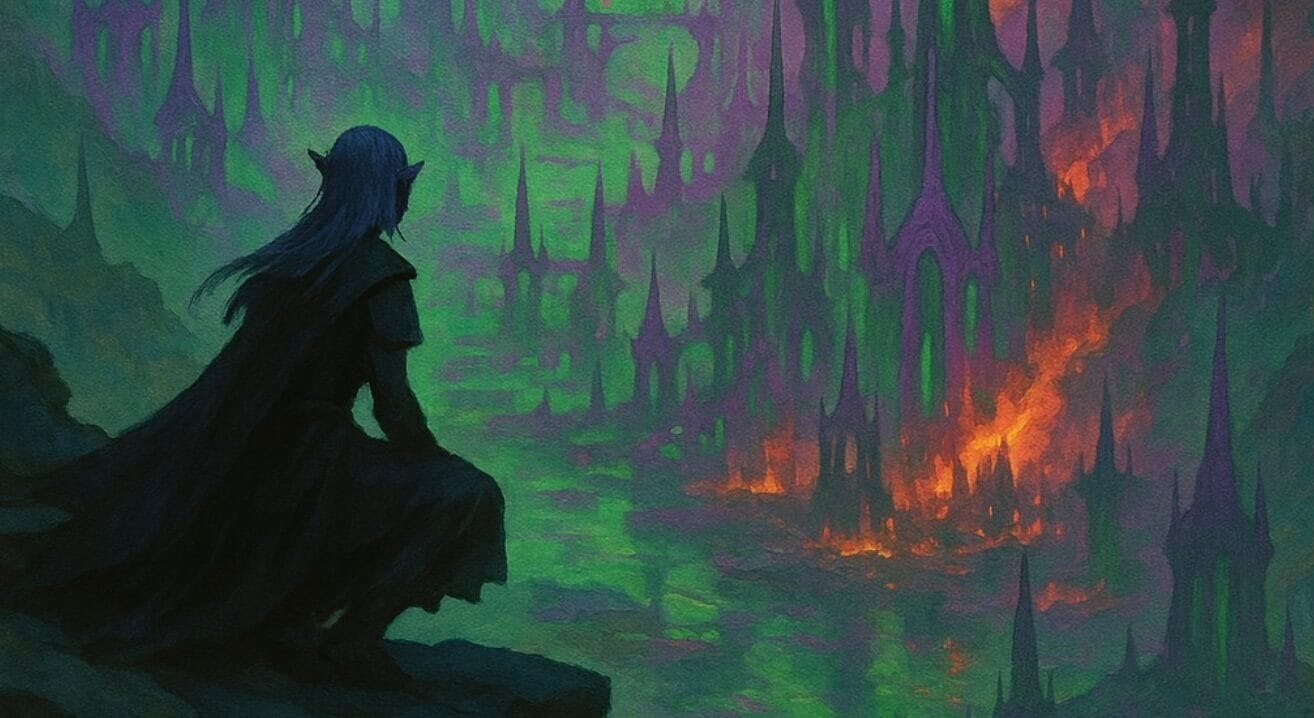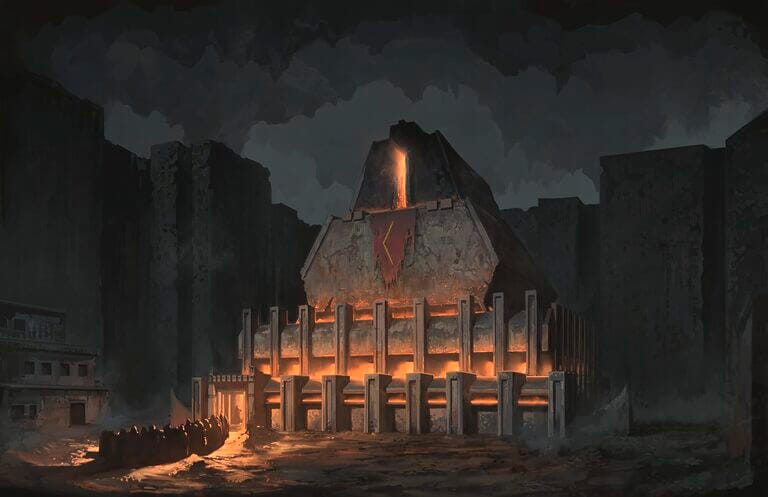Drow Architecture: How Holoth’s Design Was Replaced by Hopeholme’s Brutalist Vision
In Rise of the Drow: After the Fall, the transformation of Holoth into Hopeholme is more than a change of name. It marks a major shift in drow architecture. This change reflects the cultural disruption caused by the Coalition’s occupation. The elegant designs of the drow are now replaced by harsh, utilitarian forms. These styles clash in a way that mirrors real-world history and highlights themes of power, identity, and control.
To explore the world where this story unfolds, visit Rise of the Drow: After the Fall. If you’d like to see Holoth before the fall teleport to Rise of the Drow.
Drow Architecture in Holoth: Beauty Beneath the Surface

Before its fall, Holoth was a stunning example of drow architecture. As one of the most iconic drow cities, it turned natural formations into towering marvels. Stalactites, stalagmites, and cavern columns became elegant towers, bridges, and walkways. Drow used faerie fire to light their city with a magical glow. The result was a dreamlike atmosphere that captured the mystery of their culture.
This beauty wasn’t just for show. In fact, drow architecture reflected their social structure and beliefs. It showed their devotion to magic, their ruling hierarchy, and their control over the Underdark. For fans of Dungeons & Dragons and D&D drow city architecture, Holoth stood as the perfect example of how form met function in a magical society.

Brutalist Architecture in Hopeholme: Power Over Beauty
After Holoth fell, the Coalition rebuilt it as Hopeholme. With that came a new style of construction — brutalism. This harsh, cold approach to design rejected the drow’s love of detail and wonder. Instead, it focused on solid materials, blocky shapes, and bare stone.
Brutalist architecture in Hopeholme features hard angles and massive, unadorned buildings. These new structures project authority and control. The Coalition didn’t want to rebuild what the drow had. They wanted to replace it with something that sent a clear message: things had changed.
A few examples of real-world brutalist structures include:
This clash in style shows more than a preference in building design. It shows the erasure of drow cities and a shift in power. What was once intricate and spiritual is now simple and functional.

Symbolism in the Fall of Drow Architecture
This shift in drow architecture holds deep meaning:
- Erasing the Past: Brutalism replaces drow design, removing their identity and legacy.
- Showing Control: Harsh structures signal the Coalition’s dominance over the city.
- Changing Values: The new buildings focus on purpose, not beauty, suggesting a move toward order and utility.
Because of this change, the surviving drow must now live in a city that no longer feels like their own. Their homes and sacred spaces have become symbols of their defeat.

Real-World Inspirations for Drow Cities and Brutalism
The evolution of drow architecture mirrors real events on the surface world:
- Post-War Europe: After World War II, many cities used brutalism to rebuild quickly with concrete and steel.
- Soviet Architecture: In the Eastern Bloc, governments used brutalism to support socialist values — unity, strength, and function.
- Colonial Architecture: In many colonized regions, foreign powers built over local styles to claim dominance.
These real-world examples help ground the changes seen in After the Fall. The city feels more alive and believable because it reflects human history.

Conclusion: Telling Stories Through Stone
The shift from Holoth to Hopeholme isn’t just about buildings — it’s about loss and survival. Drow architecture, once proud and graceful, now lies beneath layers of stone and control. Players exploring this world will feel the weight of history with every step. For those who love D&D drow city architecture, this setting offers a powerful story told through stone, shadow, and change.
Rise of the Drow: After the Fall 🕷️
The City Has Fallen — Will You Rebuild, Rebel, or Rule?
The mighty drow city of Holoth lies in ruin, its elegant towers shattered, its streets filled with conflict and opportunity. The Coalition’s brutal occupation tightens its grip, but beneath the watchful eyes of their guards, power shifts in the shadows.
You are drow. Now is your chance to take the power back.
Darkness Rises, and the Time is Now…
Align with House AAW and be the first to uncover new quests, ancient powers, and revelations from the Underworld.




My heart weeps at the thoughtless loss of Holoth’s grand architecture. The spires, the bridges, even pillared homes showcased the beauty that was our home. The stone cold façade of the coalitions machinations bleeds the very heart of Holoth of elegance.